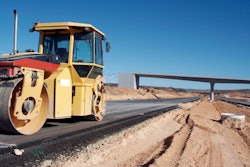
During his presidential campaign, candidate Pete Buttigieg pledged $1 trillion to infrastructure projects over the course of a decade if he was elected, promising to create six million jobs in the process. While Buttigieg was not elected to the office of the president, he was tapped by Biden to lead the US Department of Transportation.
Many in the industry hope he will remain steadfast in his commitment to fix our failing infrastructure as one of his main priorities during his campaign was dedicating resources to repairing the roadways that needed it most.
"As a political figure there's a lot of incentive to create the new exiting thing but we have to get back to basics too," he said on the campaign trail. "Mine is the only infrastructure plan that works to make sure that federal funding that goes to states for fixing roads and actually fixes what we've got in addition to adding new and exciting things. We cannot continue to add new pieces out there if we're not willing to look after what we've already got."
While we have no way to know how Buttigieg will shape the US Department of Transportation as secretary, we do know he said that he wanted to repair half of major roads and structurally unsound bridges by 2030. Under a Buttigieg administration, we may have seen stricter requirements issued for the State of Good Repair Management and this could carry over during his term as DOT Secretary.
Here are some other details Buttigieg listed as priorities in his initial infrastructure plan:
- Provide dedicated funding to repair half of roads in poor condition and structurally deficient bridges by 2030. Pete’s DOT will strengthen State of Good Repair Performance Management requirements and require states to develop achievable plans for maintaining their roads before they use federal funds for new roads or expansions. He will also create a $50 billion grant program for states to repair bridges.
- Power millions of new electric vehicles (EVs) by investing $6 billion in new charging infrastructure. Investing in EVs is a tool both to combat climate change and to drive manufacturing job growth. Pete will provide $6 billion in grants and loans through the American Clean Energy Bank for states and cities to partner with private companies and unions on installing publicly available charging infrastructure powered by clean energy. At least 40 percent of the funds will be available for projects in multi-unit dwellings and economically disadvantaged communities.
- Make the Highway Trust Fund solvent. The Highway Trust Fund has been insolvent since 2008, causing uncertainty about whether states can complete critical projects. Pete will inject $165 billion into the Fund to ensure that it remains solvent through 2029.
The Highway Trust Fund (HTF) expires September 30th of this year and the 117th Congress will need to address its solvency. Buttigieg was the only candidate to suggest shoring up the HTF so it would remain solvent beyond just a year-long extension.
"I think the time has come for my party to to assert ownership of fiscal responsibility," he said during his campaign. "I believe in having pay-fors for all of the things my campaign put forward. I'm not talking about going back to Eisenhower, I'm talking about rolling back the Trump corporate tax cuts and closing loopholes..."
Buttigieg said he would consider a vehicle miles traveled user fee, provided individual privacy is protected. “We are going to have to graduate from the gas tax because we are going to have to graduate from gas,” he said. "We know that it not a viable long-term funding mechanism for our highways. We have time to make that transition and we can identify alternatives."
Stay tuned to ForConstructionPros.com for updates on infrastructure funding news.



















